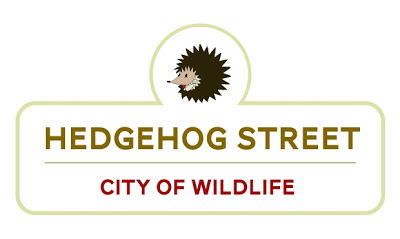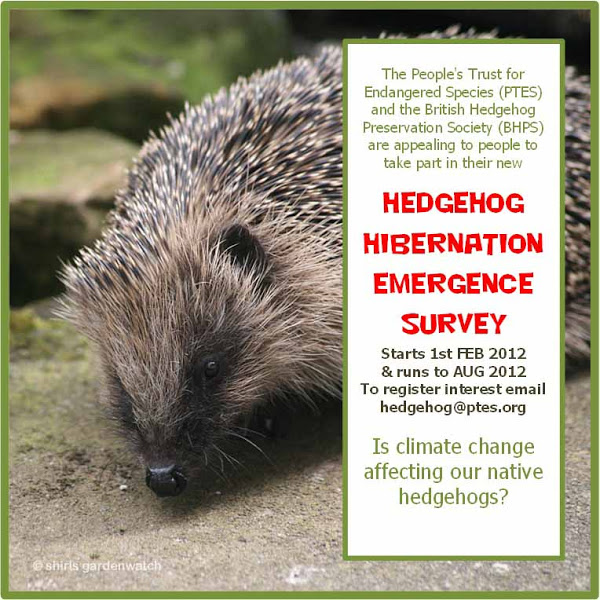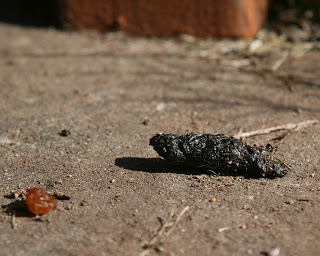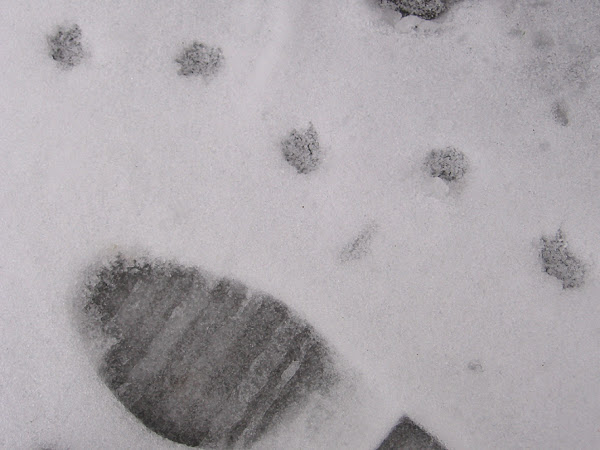F.A.O. Everyone who joined the RSPB last weekend with their Big Garden Birdwatch: I hope you enjoyed your bird count and now I’d like to invite you to wander along to Hedgehog Street. There’s a survey there that you might be interested in too – I hope so 🙂

The People’s Trust for Endangered Species (PTES) has been regularly catching my attention since I joined Twitter. Hedgehogs have been catching my attention since I began garden blogging.
It’s no surprise then that a campaign to safeguard the future of Britain’s endangered hedgehog through a new survey that is a joint campaign by the PTES and The British Hedgehog Preservation Society also caught my eye.
If you are a blogger and my Hedgehog picture below with info on the survey catches your eye then I’d like to invite you use it in a blog post. If you are unable to copy it just email me and I’ll send it to you 🙂

In support of the Hedgehog Survey I am reaching out to everyone who puts up bird feeders in their gardens – hence the RSPB Birdwatch connection. If you have hanging bird feeders you most likely have some spill of food on the ground below.
Come night time, foraging Hedgehogs could be discovering this extra food bounty! You might even be able to catch a glimpse of one if you are lucky. Pre blog & bird feeders I had never seen or imagined Hedgehogs could visit my garden. I am thrilled that I have been able to see and record their visits.
With an IR camera in a Hedgehog House that my daughter made we have watched Hedgehogs take advantage of a warm dry place to rest during their night of foraging. This hedgehog is waking from a nap of just under an hour one evening back in September 2009.
This new survey is asking members of the public to record their sightings of hedgehogs as they start to emerge in spring after hibernation – as they awake from a much longer nap than the hedgehog above.
The survey is easy to do and starts tomorrow 1st February 2012 (running through till August) and can be completed online. As with the RSPB Birdwatch, survey stats we can supply the PTES and BHPS could make a huge difference to conservation of this rather special endangered animal.
The PTES kindly sent me a Press Release and have given me permission to quote from it so I can share it with you. It makes for some interesting reading. Perhaps you’ve heard enough and would like to take part? Ok… just email to tell them you are interested and they’ll take it from there.
Wait a minute before you go… you don’t have IR cams watching your garden or in hedgehog houses so how would you know hedgehogs have passed through your garden? Lol… keep an eye out for Hedgehog droppings…

So what do you think…
“Forty years on – is climate change affecting our native hedgehogs?”
“The People’s Trust for Endangered Species (PTES) and the British Hedgehog Preservation Society (BHPS) are appealing to people to take part in a new wildlife survey to help determine whether climate change is having an impact on when hedgehogs emerge from hibernation and how this might be affecting their survival.
“Last year, PTES and BHPS published The State of Britain’s Hedgehogs, an independent study which confirmed evidence from eight existing UK wildlife surveys that hedgehog populations have plummeted by at least a quarter over the last decade. The decline of the species is attributed to a number of environmental factors, but with more extreme weather fluctuations recorded in recent seasons, might climate change be another contributing issue?
“Research in the 1970s by Britain’s foremost expert on hedgehogs, Dr Pat Morris (formerly of Royal Holloway, University of London), revealed a direct link between hibernation and climate: hedgehogs came out of hibernation up to three weeks earlier in the South West of England compared to Scotland. Furthermore, in East Anglia, hedgehogs similarly spent longer in hibernation than in the London area or South West. This marked difference in hedgehog hibernation patterns across the UK shows a general trend of prolonged inactivity in proportion to the coldness and length of the winter.
“Dr Morris explains: “Age, sex and weather all appear to influence the timing of hedgehog hibernation. For example, young animals may remain fully active into December, no doubt seeking to develop sufficient fat reserves to ensure survival during subsequent hibernation. Also, adult females that have had late litters or may still be lactating will need to feed intensively before hibernating, causing them to be active for longer than adult males. However, mild weather can also delay hedgehogs entering into hibernation or elicit premature awakening,impacting on the creature’s fat reserves and breeding times and consequently affecting the long-term survival of the species.”
“Several organisations are independently monitoring native British wildlife populations, while others are studying changes in the timing of natural events, known as phenology, particularly with regard to plants and birds; however no single study is focusing on changes in seasonal mammal behaviour, let alone a specific species like threatened hedgehogs.
“PTES and BHPS hope that with the vast people power of citizen science, they can identify any changes in the timing of waking hedgehogs since the initial research 40 years ago. The information gathered will be used to help scientists understand the hedgehog’s life cycle better, including hibernation behaviour which is an energy saving strategy when food is scarce.
“The hibernation survey is part of the charities’ joint campaign to safeguard the future of Britain’s endangered hedgehog. In the early part of the last century, hedgehogs were abundant throughout Britain, with an estimated population as high as perhaps 30 million in the 1950s. By 1995 it was estimated to be about 1.5 million (1.1 million in England, 0.31 million in Scotland and 0.145 million in Wales).
“To help these prickly but endearing creatures, the charities launched Hedgehog Street last summer, a hands-on project to encourage hedgehog conservation action at a local community or neighbourhood level. Nearly 18,000 volunteer “Hedgehog Champions” up and down the country have registered to help to date and the campaign is ongoing, but we still need your help to make a difference. Furthermore, a programme of practical research projects, funded by PTES and BHPS over the next three years, also aims to further scientific understanding about the causes for the decline in hedgehog numbers and most importantly what can be done to reverse this threat to this iconic species.”

And finally… keep an eye out for hedgehog footprints in the snow. The ones above were seen in my garden back on 31st March 2010. Through my IR cams I roughly knew the routes they took at night but it was wonderful to see their wandering footprints during daylight as evidence. This morning I have emailed the PTES to support this survey. I do hope we see hedgehogs visit my garden in 2012 🙂
This post was written by Shirley for shirls gardenwatch in January 2012. If you missed my last post with my RSPB Birdcount (including video of winners here) you can see it here.
I hope your little hedgehogs are doing ok. I think they are the cutest little creatures.
I've bookmarked the survey and will be taking part if I see any hedgehogs between now and August. Not seen any hedgehogs for quite a while now though. Maybe I've not been looking hard enough.
I'll definitely give it a go.
I have'nt seen a Hedgehog in our neck of the woods for years now.
Hi again Shirl 🙂 it has been some time since I have seen Hedgehogs in the garden, they used to be such regular visitors. I firmly believe one of the major factors in their decline is one which you highlighted a while ago which is the change in gardening habits, 'unfriendly fencing' etc.
This is too funny, the word verification is SPINATE!!! 🙂
Oh, Shirl. I'm glad there's a study. I'm glad you are interested. And I'm glad you get to see these little "critters!"
I love them (probably mostly due to Jan Brett – children's author and illustrator). I'd have loved to have one in our classroom, but they're very expensive here.
Best wishes!!
Hello from Atlanta, Georgia! I just found your blog, and have enjoyed reading and seeing your photos. I've never seen a hedgehog in real life~~we don't have them here~~so it has been fun to see. Love the bird photos and videos, too! Happy little creatures, all! I'm a gardner as well, altho I don't blog. We are having a very early spring with the daffodils already blooming. See you soon.
Hi Shirl – it's been rather a while since my last visit – thanks for adding me as a friend on Facebook – do hope your hubby is okay now after the difficult time that you've had too.
A lovely posting on hedgehogs… an interesting question as when we moved to Brittany one of my favorite evening pastimes in the warmer months was to go down to our woodland with a torch and enjoy spotting these lovely little creatures wandering the woodland at night/dusk and last year hardly saw one all year. I think a lot of this is due to pesticides the French farmers spray on their crops as I've found 3 dead ones – usually shortly after they've been spraying. I remember one year (about 3 years ago now) we had a little family that nested under the oak tree – quite gorgeous.
Anyway – do hope life is good with you… the v. cold temperatures here are not great for my work so you may hear from me a bit more over the coming weeks 🙂 Miranda x
Hi Shirl – hope you don't mind me asking but how do you put the "Share Bookmark" at the bottom of each of your postings – I'd like to do the same on my blog but can't work out how to do it! Hope you can help and also that you're not snowed in! Take care and thanks in advance Miranda x
Hello everyone, apologies for the delay in replies 🙂
Lisa, I hope so too 🙂
Crystal, Great stuff. Thanks for spreading the word too. I’ve found hedgehogs are creatures of habit and follow the same routes so if you ever see one look in the same place again. I’ve also noticed less/no visits with rain – especially heavy night showers.
Sue, ah… I bet there are a few round your veg plots 🙂
Bridget, that is a shame 🙁
Jan, again that is a shame that you don’t see hedgehogs with you. Yep… those fences and decks don’t help the hogs at all 🙁
Shady, the study is definitely worthwhile and important too. I can’t fail not to be interested in supporting this wild animal when I see it visit my garden. Ah… I do remember you mentioning the illustrations of Jan Brett before… I looked them up after… they are quite special 🙂
Gwen, hello there! Enjoy your daffodils. Thanks for stopping by my blog. I’m delighted you enjoyed your visit 🙂
Miranda, hello again. I know how it goes with blogging time. Thanks, my husband is still in recovery both mentally and physically. As a family, we are now at the waiting game again after the 1st check up. He had a CT scan yesterday and sees the surgeon in Ninewells next week. Fingers crossed seems a silly thought at this point. Ah… I might guess that a blog with hedgehog in the title would catch your eye. I do remember you mentioning hearing and seeing them when walking your dog at night before. Louis isn’t it? How sad to see dead ones on your walks. Oh… to see a family would be brilliant – I keep hoping one will nest in one of our houses with cams. Thanks, so far, no probs with the cold here. Hope you’re ok. I’ll email you on your question. I need help with that. I can’t remember what we did 🙂
There are Shirl although we rarely see them as we are not around there when they come out. We did accidentally uncover a nest once with squealing babies and a fast asleep mum. We took a quick photo – it's on our website under wildlife, recovered them and they eventually must have gone on their way.